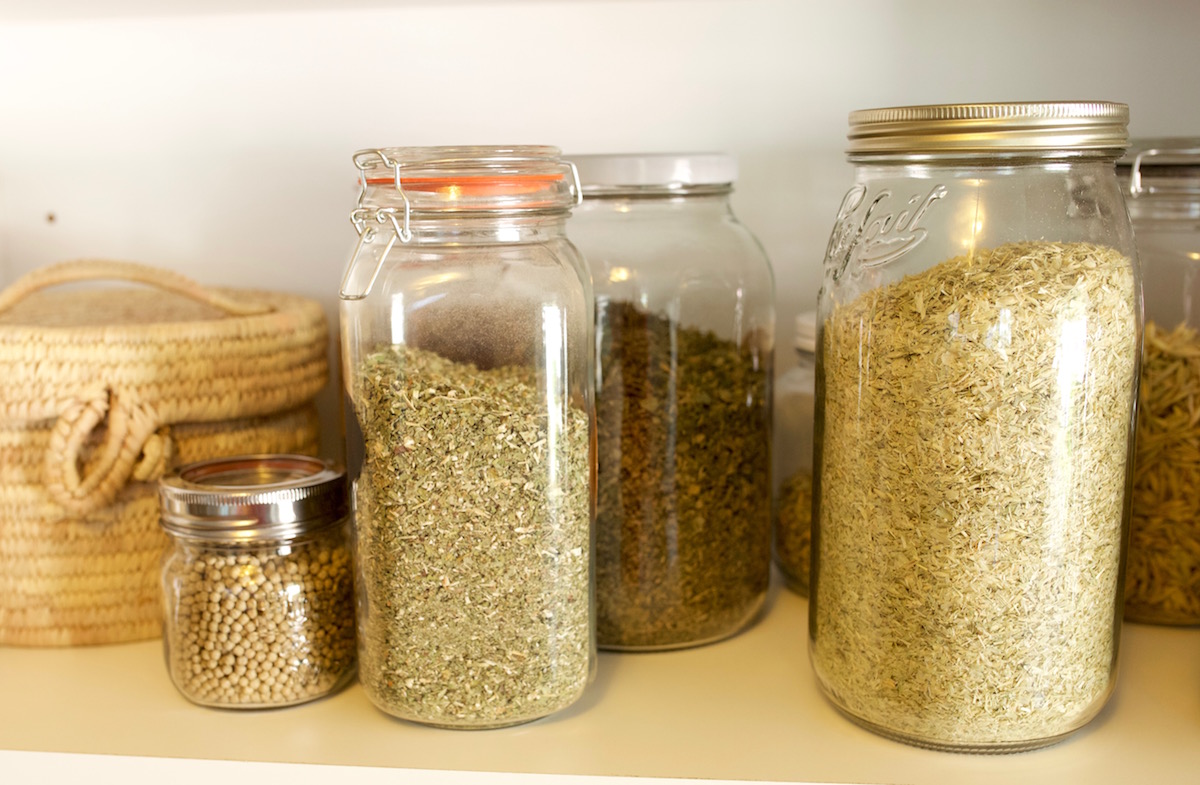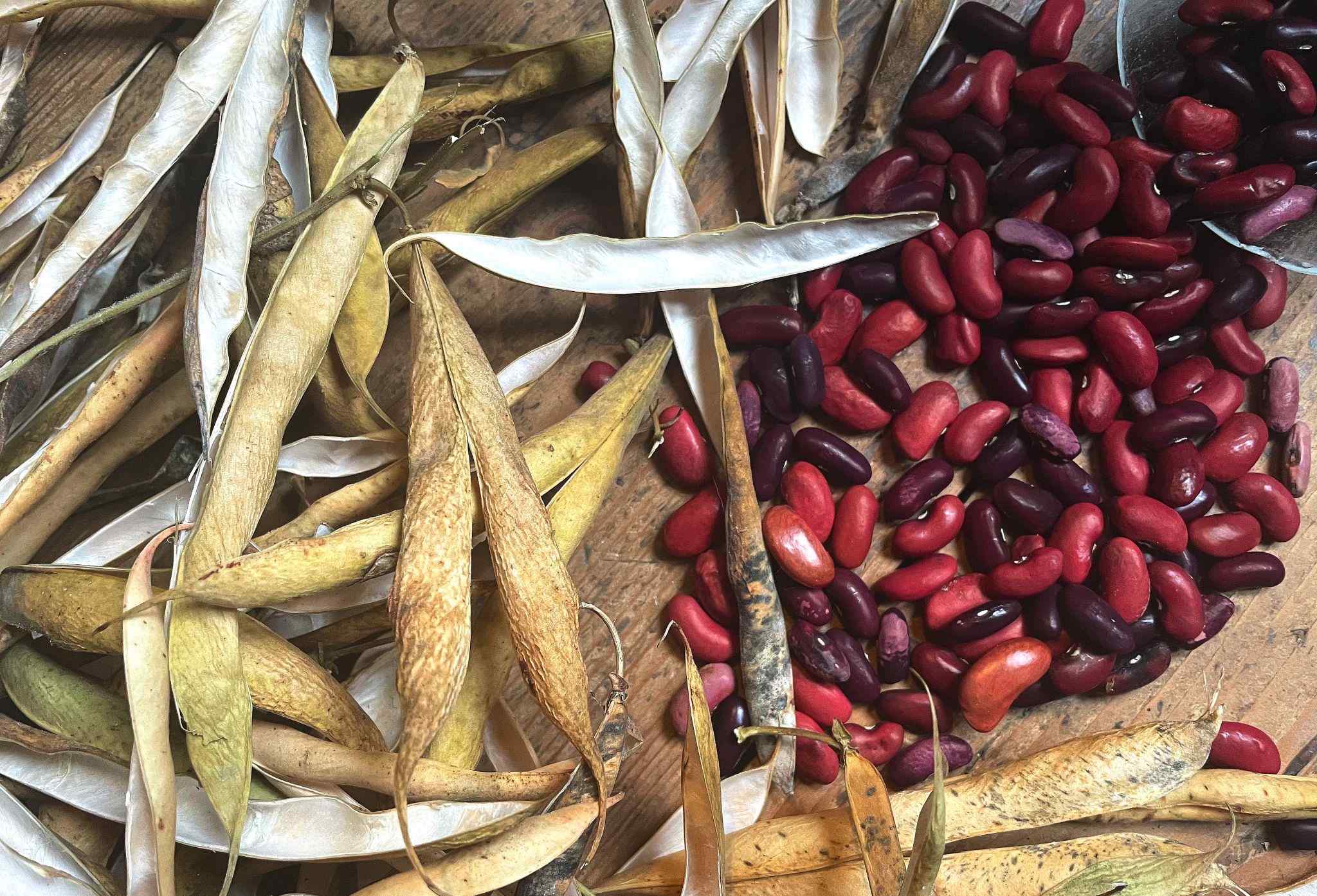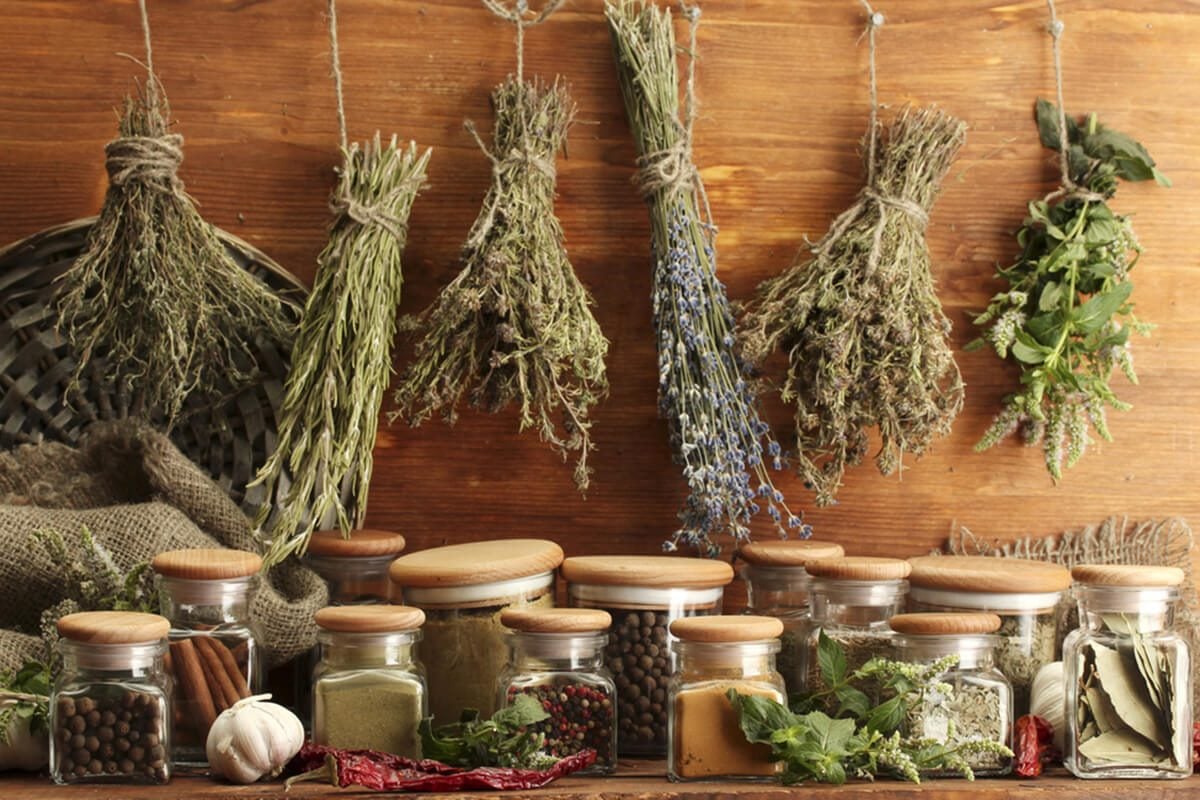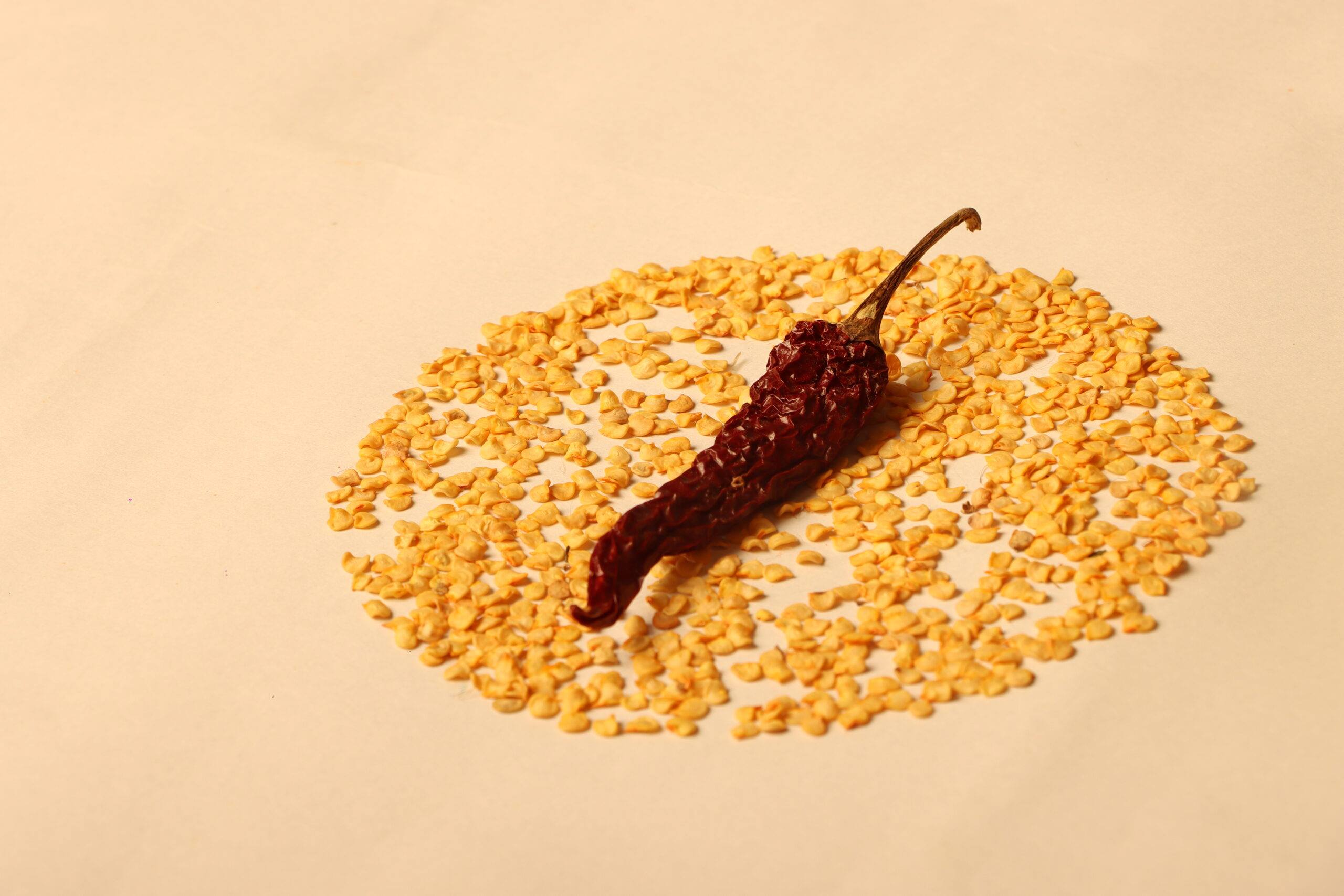Home>Gardening Basics>Understanding Soil>How To Dry Out Soil Quickly


Understanding Soil
How To Dry Out Soil Quickly
Modified: February 8, 2024
Learn how to quickly dry out soil and understand the importance of soil health. Enhance your gardening skills with our expert tips and techniques.
(Many of the links in this article redirect to a specific reviewed product. Your purchase of these products through affiliate links helps to generate commission for Chicagolandgardening.com, at no extra cost. Learn more)
Table of Contents
Introduction
Welcome to the world of soil and its fascinating intricacies! Understanding soil is essential for any gardener, landscaper, or agriculture enthusiast. One crucial factor in maintaining healthy soil is proper moisture levels. However, there are times when soil becomes overly saturated and needs to be dried out. Whether it’s due to heavy rain, poor drainage, or excessive irrigation, drying out soil quickly is necessary to prevent the detrimental impact on plant growth and nutrient availability.
Drying out soil not only helps to restore optimal soil conditions but also promotes a conducive environment for healthy root development. In this article, we will explore the reasons for drying out soil, methods to assess soil moisture levels, and various techniques to efficiently dry out saturated soil.
Before we delve into the methods and techniques, it’s essential to understand why drying out soil is crucial. Soil with excess moisture can lead to a lack of oxygen in the root zone, which can negatively affect root development and overall plant health.
Furthermore, saturated soil can lead to compaction, hindering root penetration and nutrient uptake. It also creates an ideal breeding ground for pathogens and diseases that thrive in moist environments, posing a threat to plants’ well-being.
Now that we understand the importance of drying out soil, let’s explore how to assess soil moisture levels accurately. By doing so, we can determine if the soil has reached its ideal moisture content and if intervention is necessary to dry it out.
Reasons for Drying Out Soil
There are several common reasons why soil may need to be dried out. Understanding these reasons can help you identify the cause of excess moisture and take appropriate measures to rectify the issue. Here are some of the main reasons for drying out soil:
- Heavy Rainfall: After periods of heavy rainfall, soil can become saturated with water. This can be particularly problematic if the soil has poor drainage, as the water may take longer to dissipate.
- Poor Drainage: Soil with inadequate drainage can retain excess water, leading to prolonged saturation. This can be caused by compacted soil, high clay content, or a lack of proper drainage systems.
- Over-Irrigation: Excessive watering can cause soil to become waterlogged. This can occur when plants receive more water than they require or when irrigation systems are not properly calibrated.
- Underground Water Sources: In some cases, soil may be affected by underground water sources, such as high water tables or underground springs. This can result in consistently moist soil that needs to be dried out.
- Seasonal Changes: Certain seasons, such as spring and fall, may bring about increased rainfall, causing soil saturation. Understanding the seasonal climate patterns in your area can help you anticipate and address excess moisture.
It’s important to identify the specific reason for the excess moisture in your soil before taking any remedial action. By pinpointing the cause, you can implement targeted solutions to dry out the soil effectively.
Next, we will discuss how to assess soil moisture levels accurately. This step is crucial in determining the extent of the saturation and guiding the drying-out process.
Assessing Soil Moisture Levels
Before you can effectively dry out soil, it’s important to assess the moisture levels accurately. This will help you determine the severity of the saturation and guide your efforts in restoring optimal soil conditions. Here are some methods to assess soil moisture levels:
- Visual Inspection: Begin by visually inspecting the soil. Saturated soil often appears wet, forms puddles, or has a muddy consistency. Dry soil, on the other hand, will have a lighter color and crumbly texture.
- Simple Squeeze Test: Take a handful of soil and squeeze it tightly in your hand. If water oozes out, the soil is likely saturated. If it remains compacted without water draining, it may be overly dry.
- Using a Moisture Meter: Moisture meters are handy tools that measure the moisture content in the soil. Insert the probe into the soil at different depths and take readings to determine the moisture level.
- Observing Plant Response: Plants can also provide valuable insight into soil moisture levels. If your plants are wilting despite regular watering, it may indicate that the soil is waterlogged. Conversely, if plants have stunted growth and dry, dehydrated leaves, the soil may be too dry.
- Digging a Test Hole: Dig a small hole in the soil using a shovel or trowel. Observe the color and texture of the soil at different depths. Saturated soil will have a dark, muddy appearance, while dry soil will be lighter and crumbly.
By utilizing these methods, you can accurately assess the moisture levels of your soil. This information will serve as a basis for determining the appropriate drying-out techniques that will be covered in the next section.
Techniques for Drying Out Soil
Once you have assessed the moisture levels of the soil, it’s time to implement techniques to dry it out effectively. Here are several methods to consider:
- Adjusting Irrigation Practices: One of the primary causes of excess moisture is over-irrigation. Evaluate your watering schedule and ensure you are only providing the necessary amount of water for your plants. Consider reducing watering frequency or adjusting the duration to prevent soil saturation.
- Increasing Drainage: Improving the drainage capacity of the soil is essential for drying it out. This can be done by incorporating organic matter, such as compost or well-rotted manure, into the soil. This helps to improve soil structure and drainage, allowing water to move through more efficiently.
- Applying Organic Matter: Organic matter acts as a sponge, absorbing excess moisture in the soil. Apply a layer of organic mulch, such as straw or wood chips, on the soil surface to help absorb and evaporate excess water. This will help accelerate the drying process.
- Using Soil Amendments: Soil amendments like perlite, vermiculite, or sand can be added to improve soil drainage. These amendments help loosen compacted soil and create air pockets, allowing water to drain more effectively.
- Utilizing Mechanical Aids: In cases of severe saturation, using mechanical aids can help dry out the soil more quickly. Tilling the soil can expose it to air and facilitate faster evaporation. However, be cautious not to over-till, as excessive disturbance can harm beneficial soil organisms.
It’s important to note that the most effective approach to drying out soil often involves a combination of these techniques. The specific method or combination of methods you choose will depend on the severity of the saturation, soil type, and vegetation present.
Remember to monitor the soil moisture levels as you implement these techniques and make adjustments as needed. Regularly reassess the soil condition to ensure it reaches the optimal moisture level for successful plant growth.
Adjusting Irrigation Practices
When it comes to drying out soil, one of the first steps is to evaluate and adjust your irrigation practices. Over-irrigation is a common cause of soil saturation, so making necessary changes can help prevent excessive moisture buildup. Here are some tips for adjusting irrigation practices to dry out soil:
- Watering Frequency: Assess the frequency at which you water your plants. If you have been watering every day, consider reducing it to every other day or even less frequently, depending on the specific needs of your plants and the soil type. This will allow the soil to dry out between watering sessions.
- Watering Duration: Review the duration for which you water your plants. Instead of long, continuous watering sessions, try implementing a shorter watering period with intervals. This will allow the water to penetrate the soil without saturating it.
- Time of Day: Consider adjusting the time of day when you water your plants. Watering in the morning or early afternoon allows the moisture on the soil surface to evaporate during the day. This reduces the risk of water accumulation and promotes drying.
- Irrigation System Calibration: If you use an automated irrigation system, ensure that it is properly calibrated. Check the settings and make sure they align with the needs of your plants and the current weather conditions. Avoid unnecessary water runoff and excess moisture accumulation.
- Use of Drip Irrigation: Consider switching to a drip irrigation system if you haven’t already. Drip irrigation delivers water directly to the roots, minimizing water loss through evaporation and surface runoff. This targeted approach can help prevent over-watering and minimize soil saturation.
By adjusting your irrigation practices, you can effectively manage water usage and prevent excessive soil moisture. This allows the soil to dry out gradually, restoring a healthier balance for plant growth and nutrient availability.
Now that we’ve explored adjusting irrigation practices, let’s move on to the next technique for drying out soil: increasing drainage.
Increasing Drainage
Improving the drainage capacity of the soil is essential for drying out saturated soil. By increasing drainage, excess water can flow out more efficiently, preventing the soil from becoming waterlogged. Here are several techniques to enhance soil drainage:
- Incorporating Organic Matter: Adding organic matter, such as compost or well-rotted manure, into the soil can greatly improve its drainage capacity. Organic matter helps to loosen compacted soil, allowing water to flow through more easily.
- Creating Raised Beds or Mounds: If your garden or planting area has poor drainage, consider creating raised beds or mounds. Raising the planting area allows for better water runoff, preventing water from pooling and saturating the soil.
- Installing Drainage Systems: In areas with chronic drainage issues, it may be necessary to install drainage systems, such as French drains or perforated pipes. These systems collect and redirect excess water away from the soil, preventing saturation.
- Constructing Swales: Swales are shallow ditches or depressions that direct water away from the saturated area. By strategically positioning swales in your garden or landscape, you can redirect excess water and prevent it from accumulating in the soil.
- Improving Soil Structure: Soil compaction is a common cause of poor drainage. Use a garden fork or aerator to loosen the soil, creating air pockets that facilitate water movement. This promotes better drainage and prevents water from sitting in the soil.
It’s important to note that improving drainage is an ongoing process. Regularly monitor the soil for signs of saturation, and adjust your drainage techniques accordingly. It may require a combination of these methods to effectively enhance soil drainage and ensure excess water is efficiently removed from the soil.
Now that we’ve explored increasing drainage, let’s move on to the next technique for drying out soil: applying organic matter.
Applying Organic Matter
Applying organic matter is a beneficial technique for drying out soil, as it helps improve soil structure and drainage. Organic matter acts as a sponge, absorbing excess moisture and promoting better aeration. Here are some methods for applying organic matter to dry out saturated soil:
- Adding Compost: Compost is a valuable source of organic matter that can significantly improve soil quality. Spread a layer of compost on the soil surface, and gently work it into the top few inches of soil. The compost will help absorb excess moisture and enhance drainage.
- Using Well-Rotted Manure: Well-rotted manure is another excellent option for improving soil drainage. Spread a layer of well-rotted manure on the soil and incorporate it by mixing it with a garden fork or tiller. The organic matter will help break up compacted soil and facilitate water movement.
- Applying Leaf Mulch: Leaf mulch is a readily available and cost-effective organic material. Spread a layer of shredded or chopped leaves over the soil surface, creating a natural mulch. The leaf mulch will absorb excess moisture and create a protective barrier, preventing water from saturating the soil.
- Using Straw: Straw is an excellent option for improving soil drainage. Lay a thin layer of straw on top of the soil, focusing on areas that tend to retain moisture. The straw will help absorb excess water while still allowing air circulation to promote drying.
- Planting Cover Crops: Cover crops, such as legumes or grasses, can be planted to improve soil structure and drainage. These crops have deep root systems that help break up compacted soil, allowing water to move more freely. Plant cover crops in areas with persistent drainage problems to help dry out the soil.
When applying organic matter, it’s important to ensure a balanced approach. Avoid applying excessive amounts, as this can lead to nutrient imbalances or suffocate plant roots. Monitor the soil moisture levels regularly and adjust the amount of organic matter accordingly.
Now that we’ve explored the benefits of applying organic matter, let’s move on to the next technique for drying out soil: using soil amendments.
Using Soil Amendments
Soil amendments are substances that are added to the soil to improve its physical properties and enhance moisture management. They can help improve soil drainage, break up compacted soil, and create a more favorable environment for drying out saturated soil. Here are several soil amendments that can be used to aid in the drying out process:
- Perlite: Perlite is a lightweight volcanic rock that is commonly used as a soil amendment. Its porous structure allows for improved aeration and drainage. Incorporate perlite into the soil to provide air pockets, helping to reduce soil saturation.
- Vermiculite: Vermiculite is another popular soil amendment that has excellent water-holding capacity. It helps retain moisture when the soil is dry but also improves drainage by preventing soil compaction. Mix vermiculite into the soil to aid in drying out saturated areas.
- Sand: Adding sand to heavy clay soils can help improve drainage. The coarse texture of sand helps to create larger pore spaces for water to flow through, reducing saturation. Mix sand into the soil thoroughly, especially in areas prone to water accumulation.
- Wood Chips: Wood chips or bark mulch can be used as a soil amendment to promote moisture evaporation. Spread a layer of wood chips over the soil surface, which will help absorb excess moisture and create a protective barrier to prevent further saturation.
- Gypsum: Gypsum is a soil amendment that helps to improve soil structure and drainage in heavy clay soils. It helps break up compacted soil particles, allowing water to flow more freely. Applying gypsum to clay soils can aid in drying out the soil more effectively.
When using soil amendments, it’s essential to follow the recommended application rates and take into account the specific needs and characteristics of your soil. Consider conducting a soil test to determine any deficiencies or imbalances before applying amendments.
Using the appropriate soil amendments can help enhance drainage and expedite the drying out process of saturated soil. Monitor the moisture levels regularly and adjust the application of amendments as needed.
Now that we’ve explored the use of soil amendments, let’s move on to the final technique for drying out soil: utilizing mechanical aids.
Utilizing Mechanical Aids
When dealing with severely saturated soil, utilizing mechanical aids can help expedite the drying out process. These tools and techniques help improve aeration, promote evaporation, and enhance water movement. Here are some mechanical aids to consider for drying out soil:
- Tilling or Cultivating: Tilling or cultivating the soil can help break up compacted layers and expose the soil to air. This promotes faster evaporation and allows excess moisture to escape. Use a garden fork, tiller, or cultivator to gently loosen the soil, being careful not to overwork it.
- Aerating: Lawn aerators or aerating machines can be used on lawns or larger areas to improve soil drainage. These machines create small holes in the soil, allowing better air circulation and water movement. Aerating helps foster faster drying of the soil.
- Topdressing with Sand: Topdressing with sand is an effective method to enhance drainage in lawns or fields. Spread a thin layer of coarse sand over the area and use a rake to work it into the soil. The sand helps prevent compaction and allows water to move more freely.
- Using Fans or Blowers: In cases where immediate drying is necessary, using fans or blowers can aid in evaporation. Position fans or blowers near the saturated area to promote increased airflow and speed up drying. This method is particularly useful for smaller, confined spaces.
- Installing Drainage Tiles or Pipes: Installing drainage tiles or pipes in areas with chronic drainage issues can significantly improve moisture management. These underground systems collect excess water and redirect it away from the soil, preventing saturation.
It’s important to exercise caution when utilizing mechanical aids to dry out soil. Avoid excessive or aggressive tilling, as it can damage the soil structure and harm beneficial organisms. Additionally, consider the specific needs and characteristics of your soil before using any mechanical aids.
By utilizing appropriate mechanical aids, you can accelerate the drying out process and restore optimal soil conditions more quickly and efficiently.
Now that we’ve explored the various techniques for drying out soil, let’s move on to the precautions and considerations to keep in mind during the process.
Precautions and Considerations
When drying out soil, it’s important to take certain precautions and considerations to ensure successful outcomes and prevent potential issues. Here are some important factors to keep in mind:
- Patience: Drying out saturated soil is a gradual process. It may take time for the excess moisture to evaporate and for the soil to reach optimal moisture levels. Be patient and avoid rushing the process, as this can lead to further complications.
- Monitoring Soil Moisture: Regularly monitor the soil moisture levels during the drying out process. Use a moisture meter or perform visual and tactile inspections to assess the progress. This will help you determine if additional actions are needed or if adjustments to your drying techniques are required.
- Prevent Over-Drying: While it’s important to dry out the soil, be cautious not to over-dry it. Extremely dry soil can lead to nutrient imbalances, plant stress, and poor root development. Aim for the optimal moisture range for your specific plants and adjust your drying techniques accordingly.
- Protect Beneficial Soil Organisms: When implementing drying techniques, be mindful of the beneficial soil organisms that contribute to soil health and fertility. Avoid excessive disturbance or the use of harsh chemicals that can harm these organisms. Preserve the natural ecosystem of the soil as much as possible.
- Consider Soil Type: Different soil types have varying needs and characteristics when it comes to drying out. Clay soils, for example, may require different strategies compared to sandy soils. Consider the specific characteristics of your soil and adjust your techniques accordingly.
- Prevent Erosion: During the drying out process, take measures to prevent soil erosion. Saturated soil can be prone to erosion when exposed to heavy rainfall or strong winds. Mulching, adding erosion control measures, and promoting vegetation growth can help prevent erosion and stabilize the soil.
Always prioritize the health and well-being of your plants when implementing techniques to dry out soil. Consider their current needs, growth stage, and sensitivity to moisture levels.
By taking these precautions and considerations into account, you can effectively dry out soil while maintaining a healthy and thriving growing environment for your plants.
Conclusion
Drying out soil is a crucial task for ensuring optimal growing conditions for plants. Excess moisture can hinder root development, promote soil compaction, and create a favorable environment for diseases. By implementing the techniques discussed in this article, you can effectively dry out saturated soil and restore a healthy balance. Adjusting irrigation practices, increasing drainage, applying organic matter, using soil amendments, and utilizing mechanical aids can all contribute to the drying out process.
However, it’s important to remember that drying out soil is not an instant process. It requires patience, ongoing monitoring, and adjustments as needed. Each soil and situation may have unique requirements, so adapt the techniques to suit your specific needs. Additionally, take precautions to avoid over-drying the soil and preserve the beneficial soil organisms that contribute to its health.
Remember to consider the type of soil you are working with, as well as the specific requirements of your plants. Regularly assess soil moisture levels and make informed decisions based on the observations. By doing so, you can ensure that your soil is at the optimal moisture level for successful plant growth.
So go ahead, apply these techniques, and revive your soil. Embrace the satisfaction of drying out soil and creating a healthier environment for your plants to flourish!










